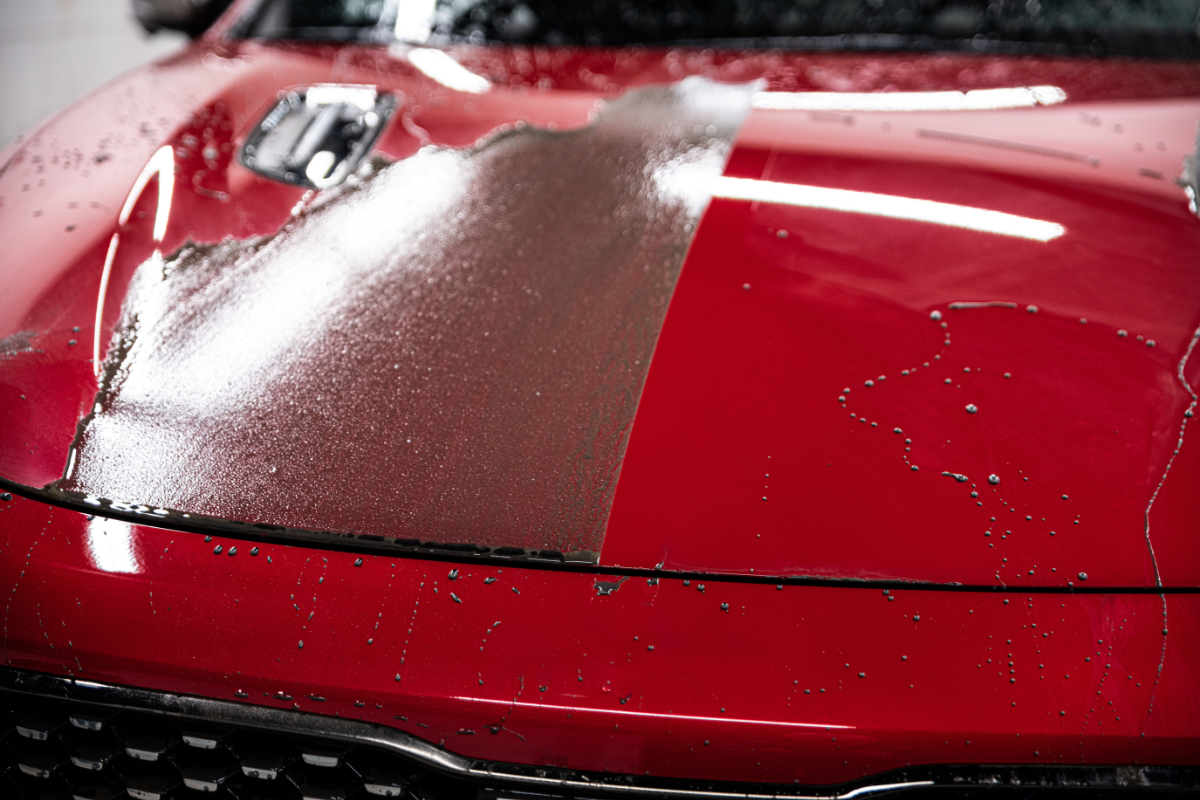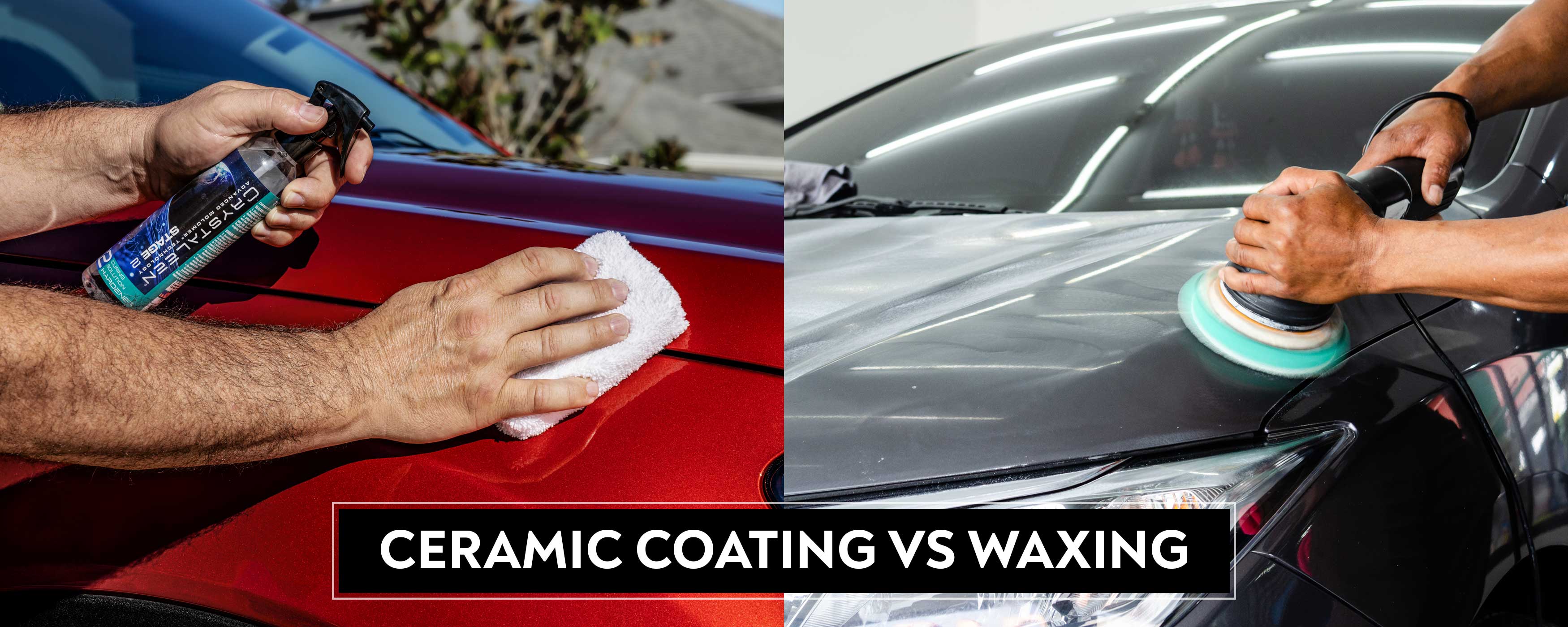Change Your Trip with Ceramic Coating: A Detailed Process
Change Your Trip with Ceramic Coating: A Detailed Process
Blog Article
Recognizing the Scientific Research Behind Ceramic Coating for Enhanced Automobile Durability
The scientific research of ceramic covering is changing lorry upkeep by offering a powerful guard against extreme environmental variables. At its core, this technology harnesses the power of silicon dioxide and titanium dioxide to create a durable, safety layer. But just what makes these substances so effective in safeguarding a car's outside? As we check out the intricate structure and application process of ceramic finishes, we reveal the tricks behind their superior security and longevity. Just how does this contrast to typical methods, and what implications does it have for lorry upkeep in the long-term? The solutions may surprise you.

Composition of Ceramic Coatings
Ceramic coatings are mostly made up of silicon dioxide (SiO2), which is obtained from natural products like quartz and sand. This substance develops the foundation of the coating, supplying its characteristic firmness and resistance to ecological elements. Along with SiO2, ceramic coatings typically integrate titanium dioxide (TiO2) for improved UV security and raised resistance to toxic wastes. These nanocomposite products develop a durable, chemical bond with the car's surface, offering a long-lasting safety layer.
The formula of ceramic finishings is a meticulous process where the concentration of SiO2 can significantly influence the finishing's efficiency. Greater SiO2 material typically leads to higher resilience and firmness, adding to the finish's capability to resist scratches and chemical etching. The equilibrium of elements is critical; also much SiO2 can make the layer weak, while as well little can jeopardize its protective residential properties.
Makers may likewise integrate extra materials, such as polysilazane, to improve flexibility and convenience of application. These ingredients enhance the covering's hydrophobic buildings, making certain water and pollutants bead off the surface area easily. This engineered composition emphasizes the efficiency of ceramic finishings in protecting a vehicle's outside versus a selection of negative conditions.
Application Refine Discussed
Using a ceramic finishing to a car includes several vital steps, each essential to making certain ideal bond and performance of the safety layer - ceramic coating. The process starts with a complete wash and purification of the car's surface area to eliminate dirt, crud, and previous waxes or sealants. This step is crucial as any type of impurities left externally can hinder the finish's ability to bond successfully
Adhering to the initial cleansing, the next action involves polishing the vehicle to eliminate any kind of imperfections, such as swirl marks or scrapes. Sprucing up makes sure a smooth surface area, which is important for the finish to adhere correctly and give a consistent finish. After polishing, a surface area prep work spray is made use of to remove any type of remaining residues and guarantee that the surface area is totally tidy.

Safety Advantages
Typically hailed for its remarkable safety top qualities, a ceramic covering uses numerous advantages that substantially enhance lorry resilience. At its core, ceramic layer forms a hard, semi-permanent obstacle over a lorry's outside, which acts as a shield against different environmental risks.
Furthermore, ceramic coverings display hydrophobic residential or commercial properties, implying they fend off water and facilitate a self-cleaning result. This characteristic lowers the adherence of dust and mud, simplifying upkeep and cleansing processes. The finish's resistance to chemical etching better ensures that the car's surface area stays unblemished in spite of exposure to extreme cleaner and toxins.
Along with these safety advantages, the ceramic coating enhances an automobile's visual allure by developing a shiny coating that emphasizes shade deepness and quality. This not only sustains the vehicle's aesthetic allure however also adds to look at here now its lasting worth by maintaining the stability of its exterior in time.
Comparing to Conventional Methods
Unlike traditional approaches of lorry protection, such as shaving or sealers, ceramic layers supply an even more resilient and resilient service. Where waxes and sealers commonly give a momentary layer of protection, commonly needing reapplication every few months, ceramic layers develop a semi-permanent bond with the car's paint. This bond develops a protective layer that is resistant to ecological pollutants, UV damages, and small abrasions.
Conventional waxes are largely composed of natural parts like carnauba wax, offering a shiny surface but doing not have the durable protective top qualities of ceramic finishings. Sealants, while synthetic and offering slightly better resilience than waxes, still fall short in contrast to the durability and chemical resistance of ceramic coatings. The sophisticated technology of ceramic coverings includes nanotechnology, which enables them to fill out microscopic blemishes in the paint surface, leading to a smoother and extra hydrophobic surface.
In regards to application, ceramic coverings need an even more precise procedure, commonly demanding specialist setup to ensure ideal efficiency. This contrasts with the reasonably simple application of sealers and waxes, which can be applied in the house. Nevertheless, the superior protection and aesthetic improvement provided by ceramic finishes warrant check out here the investment for those seeking long-lasting automobile conservation.
Longevity and Maintenance
How does the longevity of ceramic finishes convert right into convenience of upkeep for lorry proprietors? The advanced formula of ceramic finishes gives a durable safety layer on the automobile's surface area, which considerably prolongs the life expectancy of the auto's outside coating. This longevity means that the finish works as a guard versus environmental pollutants such as why not find out more UV rays, bird droppings, and road grime, which can otherwise deteriorate paintwork in time. As a result, vehicles covered with ceramic items need much less constant cleaning and outlining efforts, thereby lowering upkeep time and expenses for owners.
Additionally, the hydrophobic nature of ceramic coatings makes it possible for water and various other liquids to grain up and roll off the surface, lugging dust and particles with them. This building lessens the accumulation of pollutants, making routine cleansing more reliable and less labor-intensive. Proprietors gain from a constantly sleek, shiny look with very little effort. Nonetheless, while the covering itself is long-lasting, it is not completely maintenance-free. Regular examinations for damage and occasional reapplication are advised to ensure the protective layer stays intact. Therefore, ceramic coverings supply a valuable balance between long-lasting sturdiness and simplified maintenance for automobile treatment.
Verdict
Ceramic layers, with their sophisticated chemical composition of silicon dioxide and titanium dioxide, provide a powerful barrier versus environmental damages, significantly boosting lorry longevity. When contrasted to traditional approaches, ceramic finishings use superior defense versus UV rays, oxidation, and chemical etching - ceramic coating.
The formulation of ceramic layers is a thorough process where the focus of SiO2 can considerably affect the covering's efficiency.Applying a ceramic finish to a car entails several important steps, each necessary to ensuring ideal adhesion and efficiency of the protective layer.Usually hailed for its outstanding protective high qualities, a ceramic finish offers numerous benefits that substantially enhance car toughness. The advanced formulation of ceramic layers supplies a durable safety layer on the vehicle's surface, which substantially expands the life-span of the vehicle's outside coating.Ceramic layers, with their advanced chemical structure of silicon dioxide and titanium dioxide, supply an awesome obstacle versus environmental damage, considerably improving car toughness.
Report this page